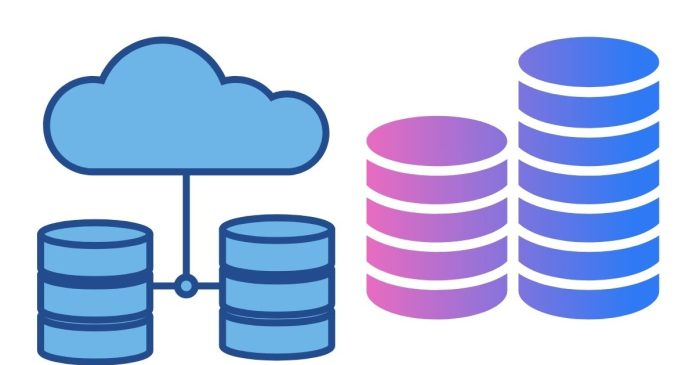Databases form the backbone of almost every digital application and system today. From managing vast amounts of data to enabling seamless transactions and providing analytical insights, databases play a pivotal role. Here’s a look at some of the most popular databases in the world, favored by developers, businesses, and organizations alike.
1. MySQL
MySQL is an open-source relational database management system (RDBMS) that has been a cornerstone of database technology for decades. Known for its robustness, speed, and ease of use, it is widely used for web applications, particularly those built with PHP. Popular platforms like WordPress, Facebook, and YouTube have utilized MySQL in their tech stacks.
Key Features:
- Cross-platform compatibility.
- Support for large-scale applications.
- Extensive community support.
- Scalable and reliable.
2. PostgreSQL
Often dubbed as the “most advanced open-source database,” PostgreSQL is a powerful RDBMS that excels in handling complex queries and advanced data types. It’s particularly popular in industries like finance, research, and data analytics.
Key Features:
- ACID compliance ensures reliability.
- Support for JSON and XML data types.
- Extensible with custom functions and types.
- Advanced indexing and concurrency control.
3. MongoDB
MongoDB is a NoSQL database designed for scalability and flexibility. Unlike traditional RDBMS, it stores data in JSON-like documents, making it ideal for applications requiring dynamic schemas. Startups and modern web apps often favor MongoDB due to its ease of use and speed.
Key Features:
- Schema-less data model.
- Horizontal scalability.
- Powerful aggregation framework.
- Suitable for real-time analytics.
4. Microsoft SQL Server
Microsoft SQL Server is a commercial RDBMS known for its integration with Microsoft’s ecosystem, including Azure. It’s a go-to choice for enterprise applications due to its advanced security features and excellent performance.
Key Features:
- Integration with Microsoft tools and services.
- High availability and disaster recovery options.
- Advanced reporting and analytics capabilities.
- Comprehensive support and documentation.
5. Oracle Database
Oracle Database is a powerhouse in the database world, known for its high performance, scalability, and enterprise-grade capabilities. It’s often used in large-scale applications such as banking, telecommunications, and enterprise resource planning (ERP) systems.
Key Features:
- Support for both OLTP and OLAP workloads.
- Multi-model database capabilities.
- High security and compliance standards.
- Extensive enterprise features like partitioning and clustering.
6. SQLite
SQLite is a lightweight, file-based database that doesn’t require a server to operate. It’s widely used in mobile applications, IoT devices, and small-scale applications due to its simplicity and low resource requirements.
Key Features:
- Zero-configuration setup.
- Cross-platform portability.
- High performance for small-to-medium workloads.
- Self-contained, single-file database.
7. Redis
Redis is an in-memory key-value store that is commonly used for caching, session management, and real-time analytics. Its high performance and simplicity have made it a favorite in scenarios requiring low-latency data access.
Key Features:
- In-memory data storage for ultra-fast performance.
- Supports data structures like lists, sets, and hashes.
- Built-in replication and persistence options.
- Suitable for real-time use cases.
8. Cassandra
Apache Cassandra is a distributed NoSQL database designed to handle large amounts of data across multiple servers. It’s widely used in industries like e-commerce, social media, and IoT for its ability to scale horizontally and ensure availability.
Key Features:
- High fault tolerance.
- Distributed architecture.
- Support for large-scale deployments.
- Linear scalability and high availability.
9. MariaDB
MariaDB is a fork of MySQL that maintains compatibility while offering additional features and improved performance. It’s becoming increasingly popular as a drop-in replacement for MySQL, especially for organizations seeking open-source solutions.
Key Features:
- Advanced security and encryption.
- Compatibility with MySQL.
- Improved storage engines.
- Open-source and community-driven.
10. Elasticsearch
Elasticsearch is a distributed search and analytics engine built on Apache Lucene. While not a traditional database, it’s often used for storing and analyzing large datasets, especially in applications requiring full-text search capabilities.
Key Features:
- Near real-time search and analytics.
- Horizontal scalability.
- Support for complex queries.
- Integration with tools like Kibana for visualization.
The choice of a database depends on the specific needs of a project, including scalability, performance, data structure, and integration capabilities. While relational databases like MySQL and PostgreSQL remain steadfast in their popularity, NoSQL databases such as MongoDB and Cassandra cater to the demands of modern, flexible, and scalable applications. By understanding the strengths and use cases of each database, businesses can make informed decisions that align with their goals.



